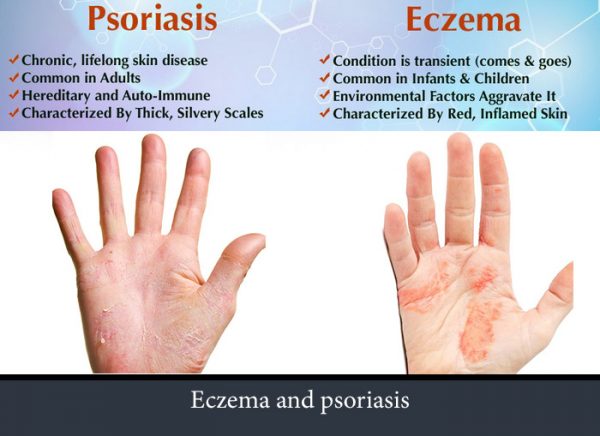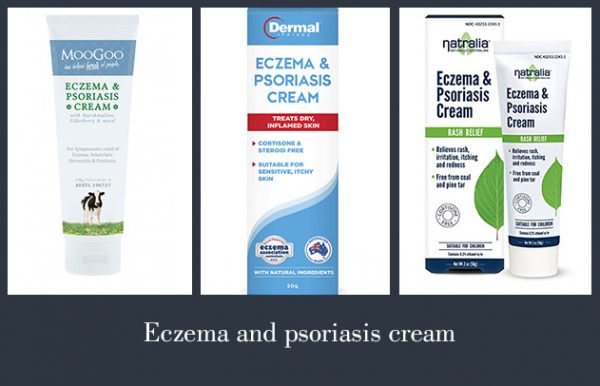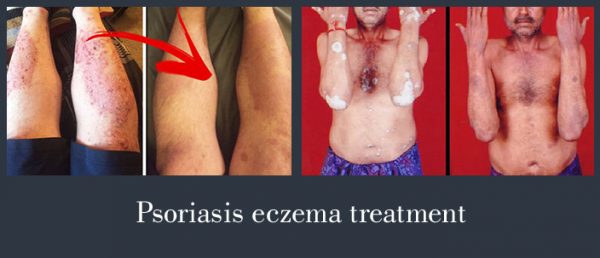Psoriasis and eczema are related to the type of diseases known to humanity since ancient times. The etiology of their occurrence is not fully understood, but in all cases negative symptoms may appear as a result of certain genetic factors and autoimmune disorders.
Typically, psoriasis is much more difficult to diagnose, since it has different clinical stages, so there are certain factors in the development of the symptoms which differ these diseases.
Similarities between psoriasis and eczema
Psoriatic and eczematous manifestations have several identical symptoms that make it difficult to distinguish them visually:
- in each case the disease leads to epidermal damage;
- like psoriasis, eczema can develop in several dermatological forms – for example, eczematous seborrhoeic form virtually does not differ from psoriasis of a vulgar form;
- in all cases primary eruptions are noted on the soles of the feet and palms.
Nevertheless, these diseases have different specific development factors that activate pathological processes in the body.
Psoriasis vs eczema: differences
Despite the fact that both diseases have certain similarity, they can be distinguished according to the following symptoms:
- the development of eczema is accompanied by an unbearable itch and burning sensation with increased pain in the lesion. In addition, this disease is characterized by diffuse boundaries of affected areas, by periodic appearance of watery blisters, in contrast to psoriasis, in which burning and itching are minor or completely absent;
- eczema is characterized by the presence of serous yellowish crust which covers bright scarlet areas of skin. Only soft tissues are affected. Pale pink psoriatic spots have clear contours and are covered with silvery scales;
- psoriatic manifestations can be found on any part of the body, including joints and nails, in contrast to eczematous manifestations, which are characterized by localization in more sensitive areas (the inner part of the joints, skin folds);
- unlike eczema, psoriatic rashes are usually dry. Despite the extensive nature of lesions on the skin in both cases, psoriasis is accompanied by active peeling. In eczema, it is not the case – except for the seborrheic form when epidermal surface is covered with scales or hard crust. In this case, diagnosis is a prerequisite;
The most obvious differences between psoriasis and eczema is in the following triad of symptoms:
- In contrast to eczema, the development of psoriasis is accompanied by a “STEARIN SPOT” phenomenon, when easy scraping of psoriatic plaques abruptly increases peeling. This symptom is absent in eczema.
- Unlike eczema, psoriasis has a “TERMINAL FILM” phenomenon, when a pinkish, slightly moist skin surface is found under the removed plaque. In eczema, a bright, dry surface of red color is found when the plaque is removed.
- Psoriatic triad includes the phenomenon of “BLOOD DEW” – when the terminal film is opened, the drops of blood (dew) appear on the wound surface. In eczematous manifestations, skin rashes can be covered with a light brown or yellow scab without any blood underneath it.
- The mechanism of the occurrence of these two diseases differs, as well as the causes. Usually, it is the external symptomatology which makes the difference. Therefore, despite the visual similarity of these diseases, it is often difficult to make correct diagnosis. In this case, doctors prefer to address to additional diagnosis.



